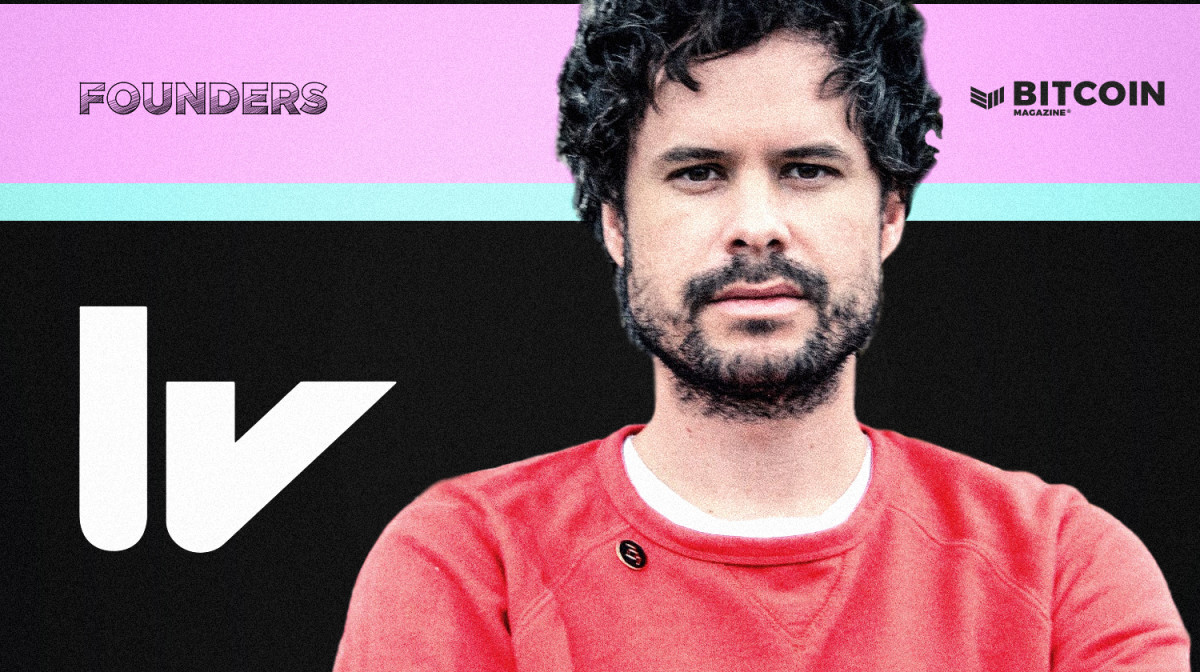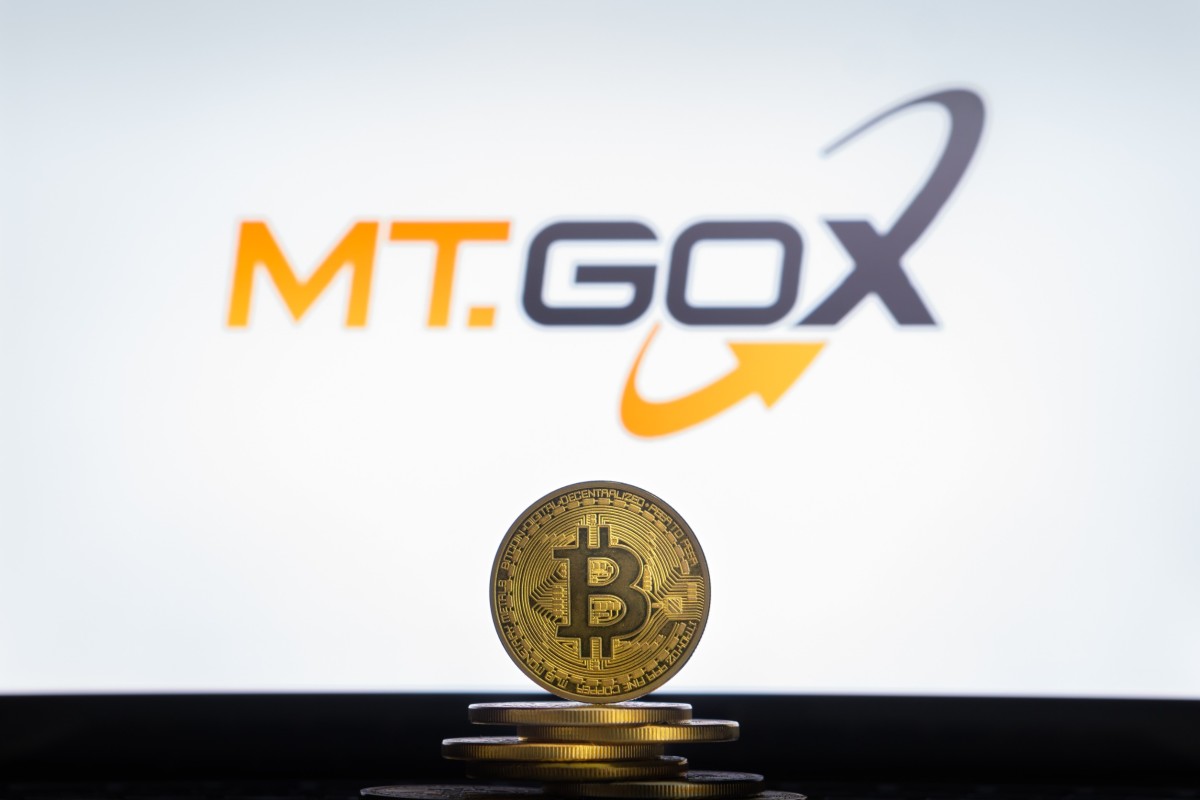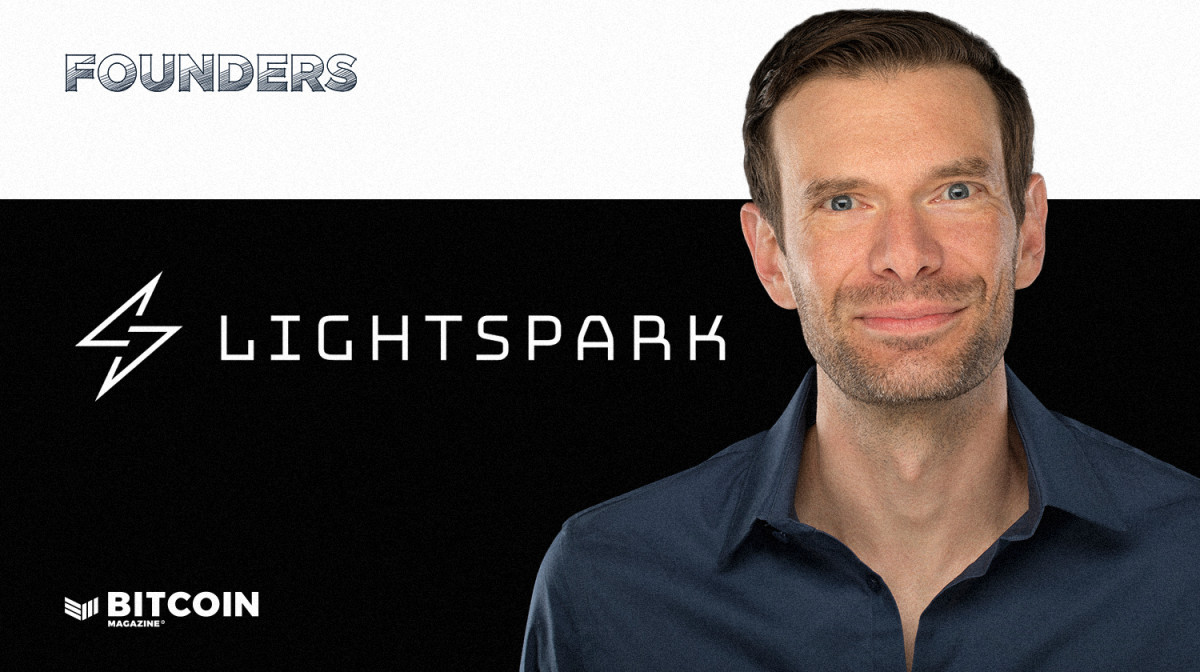business
Taking Bitcoin Mainstream, One Stream At A Time On Wavlake
Published
4 weeks agoon
By
admin

Founders: Sam Means and Michael Rhee
Date Founded: 2022
Location of Headquarters: Chicago,IL; New York, NY and Phoenix, AZ
Amount of Bitcoin Held in Treasury: N/A
Number of Employees: 3
Website: https://wavlake.com/
Public or Private? Private
Sam Means is bringing the DIY spirit of punk rock to Bitcoin.
Means, co-founder of Wavlake, a music streaming platform that employs both Bitcoin’s Lightning Network and Nostr, has been innovating in the music industry since the early 2000s. From promoting local shows to helping manage his own band as it toured the world to running a major artist merchandise business, Means has put in the work and learned more than a handful of lessons along the way.
Now, he’s taken those lessons and combined them with what he’s learned from his ten years of experience in the Bitcoin space to help create Wavlake, a music streaming platform that cuts out the middleman, allowing fans to stream sats to directly to their favorite musicians. Wavlake is a counter to Spotify, well-known for hardly paying many of the artists featured on its platform.
In my interview with Means, we discuss his journey in the music industry, how he found and learned about Bitcoin, the process of creating Wavlake and how he balances his time between Wavlake and his other business endeavors.
A transcript of our conversation, edited for length and clarity, follows below.
Frank Corva: You are the co-founder of Wavlake, the founder of the Lightning Store, and I just learned you also own a band merch company. Is this correct?
Sam Means: Yeah. So, I should probably stop calling it my main business, but my oldest business is Hello Merch. We do e-commerce, screen printing for tour fulfillment, direct-to-customer fulfillment. It’s like a one-stop shop for merch if you’re a band.
Corva: I’d like to hear how you balance all of that, but let’s start with how you got involved with music.
Means: I’ve done sort of everything. [It started] with punk bands. Some of these bands were playing in Mesa, Arizona, and I was from the suburbs. I got a car, piled all my friends in it and we started going to $5 punk shows in basements. That changed everything for me.
I started working at a venue and then started a promotion company with a couple friends. The whole time I was in bands. I was in three bands with this dude — we just kept starting bands until one of them was successful. We got signed to a major label, got dropped, and then decided to do everything ourselves.
We started our own label, got distribution and worked with a really cool management company. We used all the DIY stuff that we learned at “punk school.” We built up a really good following. We were touring constantly.
All through that, I really solidified all the music business stuff. I was always the responsible dude in the band that was dealing with merch and getting paid.
Long story short, I wore a lot of hats in the business and eventually started a merch company. We had a friend who learned how to screen print. We set up an e-commerce store in 2005, which was very difficult to do. Shopify didn’t exist then.
Fast-forward to 2014, I’d been hearing about Bitcoin from a friend of mine. He’s still around. Shout out to Mike Jarmuz.
Corva: Mike Jarmuz from Lightning Ventures?
Means: Yeah. He’s a friend of mine from middle school and was part of that whole story I just told. He started the label that put out my first band’s first record.
He also told me about Bitcoin. He’d moved to New York, started a bar and was one of the first places in New York to have a Bitcoin ATM.
By this point, I was using Shopify for Hello Merch, and I saw that you could accept Bitcoin with Shopify. I was like, “Alright, well, I’m still kind of sketched out by this, but if some people want to give it to me in exchange for band merch, I guess that’s okay.”
In 2017, I heard about the Lightning Network. I set up a couple of nodes — didn’t know what to do with them — and just turned them on. I was just like, “I’m helping” [laughter].
A couple of years later, I heard Paul from Sphinx on Marty Bent’s podcast. I started looking into it and saw that you could upload music to it. I was like, “What’s stopping me from creating a Sphinx room and just calling it like the Lightning Music Room or something?”
So, I did that and uploaded all my music to. I took an RSS feed, put it into the podcast index and was like, “Hey everybody, look, you can stream music over Lightning.”
Corva: Wow.
Means: Then, I started this thing called the Lightning Store. It was just an experiment. I said, “I’m going to just put out a bunch of bootleg music shirts, like West coast punk mashups on T-shirts with subtle Bitcoin things and find all the super big music nerds in Bitcoin if there are any.”
“If they know who the Descendants and Black Flag are and they’re into Bitcoin, there might be a chance they could at least like — cause I’m not a technical person — walk me through what needs to technically happen in order to make this actually happen instead of just fumbling.”
Corva: That sounds like a fun way to go fishing for help.
Means: It was totally fishing. People were literally like, “What is this? What are these shirts? We can’t even buy them because you have no liquidity in your node.” I had people from Lightning Labs DMing me being like, “Hey, dude, like this stuff looks super cool, but no one can buy it because you don’t have any liquidity.” I was like, “What’s that?” It was really fun. I did that in the very beginning of ‘21.
Then, I started going to more conferences and connecting people with people that were building things adjacent to what I was trying to see happen.
And then this dude Michael Rhee from Chicago built this thing called Wavlake. It wasn’t exactly what I was hoping to see, but it was something. It was like, “Okay, this guy made a thing where you can connect it to your node and you can upload music and get paid without having to upload it through Anchor or something. It [wasn’t live] yet, though.
So, I helped him test it before he launched it. I was also helping with Lightning Ventures at that point. I got Michael on a call with [the team at Lightning Ventures] to see how we could help him.
It was just too technical, though. It was a cool idea, but it just wasn’t exactly catching on for a number of reasons. After that, I sort of lost touch a little bit.
Then, I bumped into him at a Bitcoin conference in 2022. He was like, “Hey, I’m gonna have to get a job. Only 27 people have signed up for [Wavlake].”
I was like, “Okay, don’t stop because like you’re on the right path. Somebody needs to do this.” Then, I had this idea. I called him and said, “I think you need to change the entire thing. Would you want to maybe just start over and launch a [new] product?
Corva: When was this?
Means: October of ‘22. We reorganized the whole business and started over. In January of ‘23, we relaunched with a completely different product and brand.
By that summer, we had met Ainsley Costello. She became the first Wavlake superstar. She’s got a new song out today called “People Pleaser,” and people should check it out.
Then, Nostr came along almost immediately after we launched. We’d had this long-term vision of how we could make this a social thing down the road, but there aren’t a lot of social layers on RSS. Nostr was essentially just a second way to distribute these files. We were like, “Hey, we can publish on RSS and then publish to relays.”
Corva: Is Wavlake a Nostr client?
Means: One of our products for artists is called Wavlake Studio. That’s where you upload your music. When you upload your music, it distributes to RSS.
We automatically push that to the podcast index and any client that’s reading that index and has a monetization capability will have the ability to pull that song into their library. It’s tagged music.
Anything pulling in the music tag is going to see that library and then we simultaneously push it. We created a Wavlake relay that we push it out to.
So, every song gets published as a Nostr note, but pushes off of RSS. It just happens on a website and gets pushed to these channels. So, just think of them as distribution channels.
When we started seriously thinking about Nostr, we decided, “Well, there’s a couple of things here we can do. One, we can allow people to log in with Nostr on Wavlake. So, if you just want to be a listener and you don’t want to create an account, you can just log in with your Nostr account and interact.”
Then, we started thinking, “Okay, well, if we are going to utilize Nostr for a lot of social elements, most of those are going to happen in a mobile app. So, we [built] a thing called Wavman, which was our Nostr player proof of concept.
Our mobile app for iOS and Android is still in beta. That is an absolute Nostr client. When you sign up, you’re given a private key and a public key, or you can just log in and interact.
Corva: It sounds like it was a pretty organic process.
Means: Wavlake started as a conceptual thing to see if music could work on Lightning. I wanted to see it happen because the potential is so strong for this thing to completely change the infrastructure that we exist in today as musicians.
In my experience, you have to start somewhere. If you want to be in a band, you can’t just be like, “It’s fun — we played three shows and then broke up and then I got a job.” You have to just keep pushing through.
I thought it was a good idea. It just needed some work. We will just keep doing it until it works. Or at least until somebody else with a lot more money comes along and takes the idea and makes it work.
At the very least, we may just be like a spark for a bigger idea. Maybe TIDAL comes along and enables this.
My ultimate goal is just to see this change the music industry. I don’t care who does it. If we play a small part in that, that’s fantastic.
Corva: Let’s say you continue to iterate and Bitcoin becomes more normalized. How long would it take for Wavlake to replace something like Spotify?
Means: We have good Bitcoin service providers. We have wallets. We have all the fundamental stuff in place and working.
We have the money that’s so strong and being talked about in the mainstream media every single day. There’s a ticker for it on TV.
It’s time to bring in the mainstream. It’s time to bring in the normies. Let’s get them here. And we’re not going to do that with boring…
Corva: Lectures in Austrian economics?
Means: Yeah, and like, and like steak dinners and stuff. We’re going to bring them in with music and entertainment and social media.
Bitcoin is for everyone, and we need to build the stuff for everyone to use it. I think that we have a very good chance at helping a lot because right now we’re one of the main ways for music to waltz into both Bitcoin and Nostr.
Corva: Absolutely. But while you’re trying to do this, how do you balance your time between Wavlake, Lightning Store and Hello Merch?
Means: With Lightning Store, I have a fulfillment center, but I still pack all my own Lightning Store orders. I still like to put free stickers [in the shipments]. It’s just a thing I do for fun. Even when it gets kind of crazy, like when Jack wears the Satoshi shirt at the Super Bowl next to Beyoncé and Jay-Z and things get busy, it stresses me out, but I still will pack every single one of those orders.
With the merch stuff, I have a really good team in Arizona that helps keep that thing going. It doesn’t require a ton of day-to-day work.
And we’re still so small with Wavlake.
It’s tough to balance stuff, but I’ve always had a lot of things going on. I function better when I have more things happening. I’ll only work with things that I think can ultimately work together.
So, these are a lot of different things, but they’re all in the same world. It’s like, I make music, I sell merch. I sell merch for bitcoin. I’m a Bitcoin person. I have a music company that’s in Bitcoin and also has merch. All these things connect.
Corva: How much do some of the bigger artists on Wavlake make?
Means: The best metric here is that most artists who are active on Wavlake are averaging about 12 cents a zap.
It’s not about the total amount that they’ve made. Ainsley Costello has been on a lot of podcasts saying she made $1,500 in her first couple of months, and she had only made maybe $600 in her whole lifetime as a musician. She’s 19 or 20 now and has been doing this since she was a kid and has only seen $600 or $700.
It’s more about hope. People who really get it are getting it because a lot of these other things like these shitcoins and NFTs that are about making money really fast — everyone’s sick of that. Artists are looking for sustainability.
Just took Man Like Kweks. He’s been very vocal about how he’s like paying his utility bills with what he’s making on Wavlake.
We also just did an interview with this really great poet OKIN who’s in a group called…
Corva: Black Vulcanite?
Means: Yeah, Black Vulcanite. He made [the equivalent of] 500 Namibian dollars [from boosts and zaps on Wavlake] last month. That’s about $80 US dollars.
So, yeah, there’s hope. All of these things are out there that actually have a chance to help people in a sustainable way. It’s going to bring bands closer to their fans, which I know, based on my experience, is the most important thing.
Corva: You’ll be working with Bitcoin Magazine on a vinyl release. Can you tell me a little bit about this?
Means: Yeah, we did a really cool contest where existing Wavlake artists or new artists could just upload music to Wavlake and the 21 songs that earned the most sats would go to the next level. 11 artists out of those artists who made those 21 songs ended up on the record.
Man Like Kweks, Ainsley Costello and Joe Martin will be on there. It’s going to be available at the Bitcoin conference. We’re also doing a concert there on July 25, industry night, with Ainsley Costello, Joe Martin and JUSTLOUD, who’s been burned by the industry and is hopeful with what’s happening in this [Wavlake] world.
Corva: Awesome. That sounds like a lot of fun.
Means: It’s been cool to find the Bitcoiners, and we’re happy for all the support in this community. We’re just going to keep doing our thing.
Source link
You may like


Multicoin Capital To Fund Crypto-Friendly US Candidates In Solana


Multicoin to Match Up to $1 Million in Solana Donations to Pro-Crypto Candidates


Multicoin Capital pledges up to $1m to pro-crypto Senate candidates


MATIC Price Crash: Reaching A Two Year Low


Multicoin Pledges up to $1M for Pro-Crypto Senate Candidates


Crypto heists near $1.4b in first half of 2024: TRM Labs
Bitcoin price
Bitcoin Price Falls as Mt Gox Starts Repayments
Published
8 hours agoon
July 5, 2024By
admin

The Bitcoin price plunged this week, sinking below $55,000 for the first time since February as the now-defunct Mt Gox exchange began distributing billions in owed funds.
Mt Gox announced it has started repaying creditors, ending years of waiting stemming from its 2014 collapse. The Japan-based exchange will distribute approximately $9 billion worth of Bitcoin, Bitcoin cash, and fiat currency.
The news added heavy selling pressure on Bitcoin, which fell over 6% on Friday to trade near $54,000. The broader Bitcoin and crypto market shed over $170 billion in 24 hours amid the declines.
On Thursday evening, Mt Gox moved around 47,000 Bitcoin worth nearly $2.7 billion from cold storage wallets to a separate address. While intentions remain uncertain, the transfer fueled concerns creditors may sell portions of recovered coins.
The payouts come after protracted bankruptcy proceedings for Mt Gox, which suffered a massive hack in 2014 that resulted in 850,000 Bitcoin being lost. It was the largest crypto exchange at the time, handling 70% of all Bitcoin transactions.
The repayment of creditors marks a major step toward resolving Mt Gox’s decade-long insolvency case. However, the influx of previously lost coins threatens to shift supply and demand dynamics.
Some analysts estimate selling pressure from payouts could push Bitcoin’s price as low as $50,000 in the near term. Ongoing transfers from the German government have also weighed on the market.
However, others argue the amounts equate to a small fraction of daily Bitcoin trading volumes. They say most creditors are long-term investors unlikely to dump holdings en masse, limiting impacts.
Nonetheless, analysts widely expect significant volatility ahead between Mt Gox distributions and the start of German government sales in July.
Source link
bitcoin exchanges
German Government Moves Over $75 Million in Bitcoin to Exchanges
Published
1 day agoon
July 4, 2024By
admin

The German government has transferred another chunk of its massive Bitcoin reserves to exchanges.
According to blockchain data, the German Federal Criminal Police Office (BKA) moved roughly $75 million worth of Bitcoin across multiple transactions on July 4th. The funds were spread across exchanges, including Coinbase, Kraken, and Bitstamp.
This comes after the government shifted around $315 million in bitcoin to various platforms since mid-June. Germany has offloaded over $390 million in Bitcoin in under a month.
In 2013, the BKA seized nearly 50,000 bitcoin linked to the former operator of the film piracy website Movie2K. The stash is estimated to be worth $2.3 billion at today’s prices.
The steady flow of bitcoin to exchanges signals Germany’s potential plans to liquidate portions of its reserves. This has sparked fears of impacts on Bitcoin’s market price, which dipped below $58,000 this week.
However, the amounts transferred so far make up a relatively small share of the BKA’s massive Bitcoin trove. After the latest movements, Germany still holds around 40,000 Bitcoin.
The sales mirror similar transfers by the U.S. government in recent weeks. America also holds Bitcoin confiscated from criminal cases, prompting concerns it may be selling reserves.
The liquidations come as creditor repayments from Mt. Gox’s 2014 collapse appear set to begin in July. The timing threatens to compound selling pressure on Bitcoin.
However, proponents argue the amounts equate to a tiny fraction of daily Bitcoin trading volumes.
Source link
business
Lightspark Enables Institutions To Use The Bitcoin Lightning Network
Published
1 day agoon
July 4, 2024By
admin

Company Name: Lightspark
Founders: David Marcus, Kevin Hurley, Christina Smedley, James Everingham, Christian Catalini, Jai Massari and Tomer Barel
Date Founded: April 2022; Series A May 2022
Location of Headquarters: Los Angeles, CA
Amount of Bitcoin Held in Treasury: N/A
Number of Employees: 45
Website: https://www.lightspark.com/
Public or Private? Private
Kevin Hurley and the team at Lightspark want to make it easier for institutions and everyday people to transfer value via bitcoin.
This is why they’ve created Lightspark, a Lightning Service Provider (LSP) — and more — that offers enterprise-grade infrastructure that enables companies around the world as well as the customers for those companies to make payments globally using the Bitcoin Lightning Network.
“We want to carry on the vision that we originally had with Diem,” Hurley told Bitcoin Magazine. “And that was to really open up the financial world, make it into something where you can send money as easily as you send data packets today.”
Hurley also shared why the team at Lightspark chose to build on Bitcoin.
“Some of the learnings from [Diem] are that you really need something that’s truly decentralized, something that’s a neutral protocol and something with a lot of liquidity,” explained Hurley. “These are key aspects to Bitcoin and part of what makes Bitcoin so special.”
How does Lightspark work?
Lightspark considers itself a more than just a LSP because it offers a Software Development Kit (SDK), liquidity management via routing nodes, cloud based node architecture and API services that vendors can employ to build certain features or utilize certain services.
The Lightspark SDK lets customers very easily access the Lightning Network for payments without dealing with the headaches that normally come with using the network.
“We try to abstract [away] all the complexity of Lightning,” explained Hurley. “We talked to a bunch of the companies that have been in the Bitcoin space for a long time and tried to understand why they weren’t using Lightning or why they had tried and given up on it, and we heard a pretty similar refrain from all of them — it was just too complex.”
To use Lightning without an LSP, companies would normally need employees dedicated to managing and rebalancing the liquidity in their Lightning Nodes. With Lightspark, though, companies need only utilize a few lines of code provided by Lightspark to start using the Lightning Network for payments. Lightspark handles all of the technical details on the backend. Plus, Lightspark offers other features that institutions may find particularly useful.
“We have compliance features built on top of our stack,” said Hurley about how Lightspark can help companies stay compliant with FinCEN’s Travel Rule.
“We have AI built on top of our stack to make it so payments are extremely successful. We have Predict, which is like the Google Maps for Lightning. [It shows us] where traffic is backed up to help us route transactions more successfully. Then we start to tack on things like UMA or Universal Money Addresses, which allow you to send from any currency to any other currency,” he added.
Universal Money Addresses (UMA)
One of the most notable features Lightspark has architected and open-sourced is UMA.
Using Lightspark, companies can offer their clients a Universal Money Address, which is a cross between a Cash App $cashtag and an email address (e.g., $yourname@yourwallet/bank/exchange.com).
An UMA lets users send either crypto or fiat seamlessly, albeit in a custodial manner.
Hurley explained how UMA is built on top of and interoperable with LNURL and Lightning Addresses. A difference between LNURL and UMA is that UMA can be used to send fiat in its own unique way.
“You’re able to go from any currency to another currency using UMA,” shared Hurley.
“Let’s say I’m coming from Brazil, and I want to send money to someone in Mexico. Maybe I’m in Mexico visiting and I go to the 7-Eleven and want to buy something. I should be able to send from my native currency to Mexican pesos,” he added.
“With UMA, what happens is my Brazilian reals are converted instantaneously to sats. They’re streamed over Lightning and convert instantly from sats to pesos and pay out to the 7-Eleven.”
Part of the reason such transfers can happen legally is that UMA facilitates the exchange of compliance data between the different institutions with which Lightspark works, which are located around the globe.
The exchanges, neobanks, and other institutions that partner with Lightspark — all of which are regulated bitcoin/crypto custodians — have the proper money transfer licenses in their respective jurisdictions, which keep Lightspark and its partners in compliance with the aforementioned Travel Rule.
Lightspark’s Partner Institutions
Lightspark has made headlines lately, as it has signed deals with major institutions like Coinbase, Xapo, and Nubank. And as each new partner comes on board, more potential partners become interested.
“They see the growth — especially when we onboard a Coinbase — and a lot of entities have come to us and been curious about what’s happening,” said Hurley.
“They see that big players are starting to get interested and starting to see real volume on it, and they want to be involved, as well. They don’t want to be left behind because they understand that this area is growing and becoming very important,” he added.
For now, interest is coming from the more tech-forward neobanks, as these institutions want to provide services that differentiate them from traditional banks. However, Hurley noted that the major traditional banks are paying attention, too.
“The benefit [of what Lightspark provides] applies to a J.P. Morgan just as much as it applies to Nubank,” explained Hurley.
“We’ve engaged with quite a few of them. They oftentimes will need to see others do it first,” he added.
“Once they start to see real adoption, I think there will be quick adoption by them, too.”
Hurley also pointed out that there’s good reason for some of the bigger traditional financial institutions to come on board.
“Traditional financial firms have big pain points,” explained Hurley.
“They might have bank accounts in multiple countries, and, even within their own bank, transferring money takes days because they are transferring using SWIFT. They’re going from one entity in, let’s say, Argentina to one in Europe, and it takes them three to five days to transfer money. It means they have to set up correspondent banking. It’s a big burden on them and can be quite costly,” he added.
“I think they’re very excited to see something that can work more quickly, more efficiently and have better rails. It’s a net positive for everyone.”
Bullish On Bitcoin, Conscious of Reality
While Hurley and the Lightspark team believe that Bitcoin adoption will continue to grow, they’re also well aware that many people worldwide are still uncomfortable using Bitcoin.
Hurley sees Lightspark’s approach as a way to further Bitcoin adoption, while keeping in mind where the customer is coming from.
“To actually get real adoption and to keep increasing adoption, you need to meet consumers where they are, and a lot of consumers right now are comfortable with fiat,” said Hurley.
“Those folks probably don’t know anything about Bitcoin, and it’s going to take a while for them to be exposed to it. So, if you can abstract that away for them, allow them to use the currency they feel comfortable with, that helps get people on board and helps build adoption,” he added.
That said, Hurley also acknowledged that there are others who prefer to just use bitcoin and ultimately use it non-custodially before making the point that Lightspark and its partners enable users to send their bitcoin to a non-custodial wallet if they so please.
“Users can exit at any time from a custodian and go to noncustodian,” Hurley said.
He then made the point that neither Bitcoin nor Lightning currently has the potential to bring the masses to the network in a non-custodial manner, which is why companies like Lightspark and the companies it partners with are important right now.
“You can’t onboard billions of users to Bitcoin and Lightning [non-custodially] today,” explained Hurley.
“Long-term that could be possible, and we are doing a lot of exploration into how to make that happen, because we feel like it’s vital to the ecosystem,” he added.
For now, though, Hurley sees the custodial solutions that companies like Cash App, Coinbase, and, of course, Lightspark are providing as a means of getting people to use Bitcoin in a non-complicated manner.
Source link

Multicoin Capital To Fund Crypto-Friendly US Candidates In Solana

Multicoin to Match Up to $1 Million in Solana Donations to Pro-Crypto Candidates

Multicoin Capital pledges up to $1m to pro-crypto Senate candidates

MATIC Price Crash: Reaching A Two Year Low

Multicoin Pledges up to $1M for Pro-Crypto Senate Candidates

Crypto heists near $1.4b in first half of 2024: TRM Labs

FTX Founder Sam Bankman-Fried’s Family Accused Of $100M Illicit Political Donation

Bitcoin Price Falls as Mt Gox Starts Repayments

20% Price Drop Follows $87 Million Spending Outrage

More than 10 years since the collapse of Mt. Gox, users confirm reimbursements

Leading Telecom Company Taiwan Mobile Gets Crypto Exchange License

Here Are Price Targets for Bitcoin, Solana, and Render, According to Analyst Jason Pizzino

Bitcoin price plunges below $55k as Mt. Gox announces repayments

Jasmy Sheds 20% Amid Bitcoin Sell-Off

Are they a good thing?

Bitcoin Dropped Below 2017 All-Time-High but Could Sellers be Getting Exhausted? – Blockchain News, Opinion, TV and Jobs

What does the Coinbase Premium Gap Tell us about Investor Activity? – Blockchain News, Opinion, TV and Jobs
BNM DAO Token Airdrop

NFT Sector Keeps Developing – Number of Unique Ethereum NFT Traders Surged 276% in 2022 – Blockchain News, Opinion, TV and Jobs
A String of 200 ‘Sleeping Bitcoins’ From 2010 Worth $4.27 Million Moved on Friday
New Minting Services

Block News Media Live Stream

SEC’s Chairman Gensler Takes Aggressive Stance on Tokens – Blockchain News, Opinion, TV and Jobs

Friends or Enemies? – Blockchain News, Opinion, TV and Jobs

Enjoy frictionless crypto purchases with Apple Pay and Google Pay | by Jim | @blockchain | Jun, 2022

How Web3 can prevent Hollywood strikes

Block News Media Live Stream

Block News Media Live Stream

Block News Media Live Stream

XRP Explodes With 1,300% Surge In Trading Volume As crypto Exchanges Jump On Board
Trending

 Altcoins2 years ago
Altcoins2 years agoBitcoin Dropped Below 2017 All-Time-High but Could Sellers be Getting Exhausted? – Blockchain News, Opinion, TV and Jobs

 Binance2 years ago
Binance2 years agoWhat does the Coinbase Premium Gap Tell us about Investor Activity? – Blockchain News, Opinion, TV and Jobs
- Uncategorized3 years ago
BNM DAO Token Airdrop

 BTC1 year ago
BTC1 year agoNFT Sector Keeps Developing – Number of Unique Ethereum NFT Traders Surged 276% in 2022 – Blockchain News, Opinion, TV and Jobs

 Bitcoin miners2 years ago
Bitcoin miners2 years agoA String of 200 ‘Sleeping Bitcoins’ From 2010 Worth $4.27 Million Moved on Friday
- Uncategorized3 years ago
New Minting Services

 Video2 years ago
Video2 years agoBlock News Media Live Stream

 Bitcoin1 year ago
Bitcoin1 year agoSEC’s Chairman Gensler Takes Aggressive Stance on Tokens – Blockchain News, Opinion, TV and Jobs

